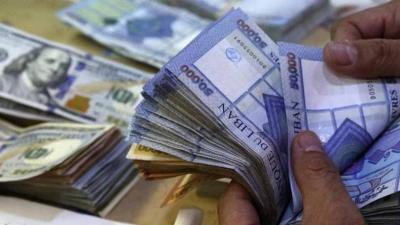Lebanon is rapidly moving towards a leading position globally in cumulative inflation rates due to the inflation index and the collapse of its national currency, amidst a state of "uncertainty" that has persisted politically for nearly four years. This situation has worsened recently with the vacancy in the presidency and the escalating disputes regarding the duties and powers of the caretaker government, in addition to the paralysis affecting state institutions and public administrations.
The cumulative inflation index is set to surpass 2000% since the end of 2018, having started around 715% at the end of 2021. This follows an average annual increase in the inflation index of about 195% over the first ten months of the current year. Furthermore, Lebanon recorded the second-highest nominal inflation rate in food prices worldwide during the first eight months of the current year, with an annual change of 198%, following Zimbabwe, which recorded a 353% increase.
Confusion grips the financial and consumer markets due to heightened fears of additional record declines in the national currency’s value. This concern stems from the significant increase in the cash mass in Lebanese lira, currently amounting to about 72 trillion lira, linked to an expected official exchange rate increase for the dollar to 15,000 lira starting February 1 of next year. This new rate will also apply to the conversion of dollar deposits, currently being exchanged at rates of 8,000 and 12,000 lira per dollar.
A new wave of liquidity flowed into the market following the implementation of salary increments for public sector employees amounting to an additional two months' pay. Until the central bank's directions for managing this new liquidity become clear, a banking official anticipates a circular will be issued to reduce the withdrawal limits within the available monthly quotas for individual depositors from $3,000 to $2,000, or to maintain the maximum withdrawal limits in lira between 5 and 8 million lira per account. It is noted that the balanced minimum for living expenses requires liquidity equivalent to no less than $500 monthly.
In addition to salaries being disbursed in cash dollars, which provides employees an extra income boost from the difference between the rate on the platform (currently 30,500 lira per dollar) and the actual market rate of around 42,500 lira, the ongoing application of circular number 158 guarantees a similar flow with a monthly cash quota of $400 for about 97,000 individual depositors in both the public and private sectors. However, they incur deductions approaching 70% on half of the withdrawals processed at the rate of 12,000 lira per dollar. The number of participants voluntarily benefiting from this circular reached around 172,000 accounts since its launch mid-last year.
Simultaneously, there are growing fears of an impending rise in the inflation index due to a confluence of influential factors occurring simultaneously. While the Ministry of Finance began collecting customs fees at the rate of 15,000 lira per dollar earlier this month—a tenfold increase—this will lead to hikes in value-added tax and the imposition of a new 3% fee on most goods. These pressures continue to affect the actual price of the lira in parallel markets, with the dollar reaching around 43,000 lira, bolstered by protective increases no less than 20% that affect consumer prices, pushing the commercial reference price close to 50,000 lira.
The basic food basket poses significant risks indicating consequences that go beyond living conditions and threaten the fragile stability, particularly with the rapid upward trend of nominal inflation rates in food prices, likely to end this year approaching 250% due to the immediate impacts of fee increases and the dollar’s rising cost against the national currency. This could rapidly deplete the effects of the increased incomes of public sector employees while exacerbating living capability disruptions for a substantial part of private sector employees who have yet to benefit from equivalent income increases.
While observing the effects of future increases in fees and public service costs—including the new surges in public electricity costs and property taxes, which range five times the minimum—and adding to ongoing increases in the telecommunications sector, the latest statistics from the Central Administration of Statistics show a new monthly increase of 14.65% in the consumer price index in Lebanon for October 2022, compared to an 8.4% increase the previous month.
Thus, the annual inflation rate recorded an increase of 158.46% due to rises across all its components, highlighting unprecedented increases in healthcare costs of 270%, accounting for 7.7% of the index, alongside education costs rising by an average of 191% with a weighting of 6.6%, reflecting educational and healthcare institutions' tendency to price services in cash dollars partially or fully. Food prices also maintained sharp increases, reaching a rate of 203.21%, representing 20% of the aggregate inflation index. There was also a 195.15% increase in transportation costs, a 254% rise in housing costs (water, gas, electricity, and other fuels), and a surge exceeding 228% in communications costs, driven directly by increased prices for calls and mobile services.




